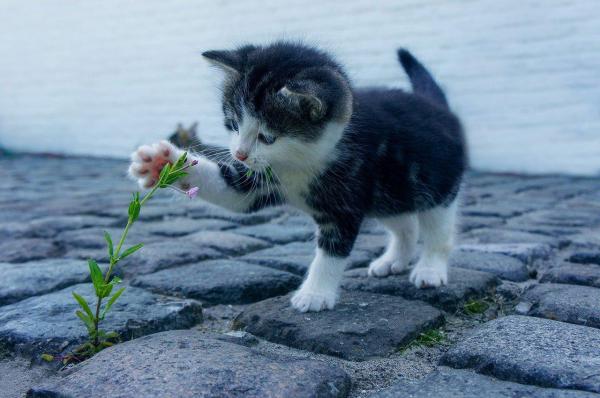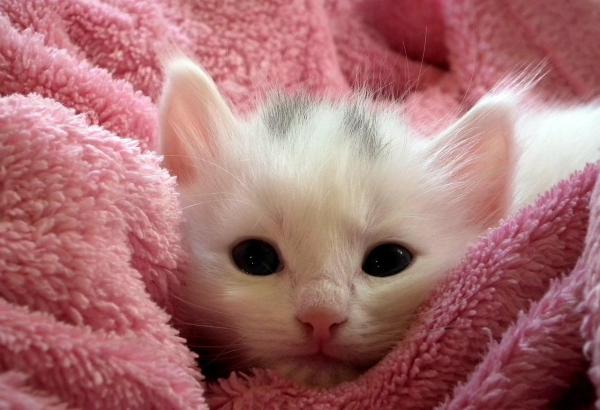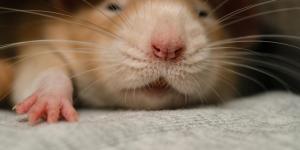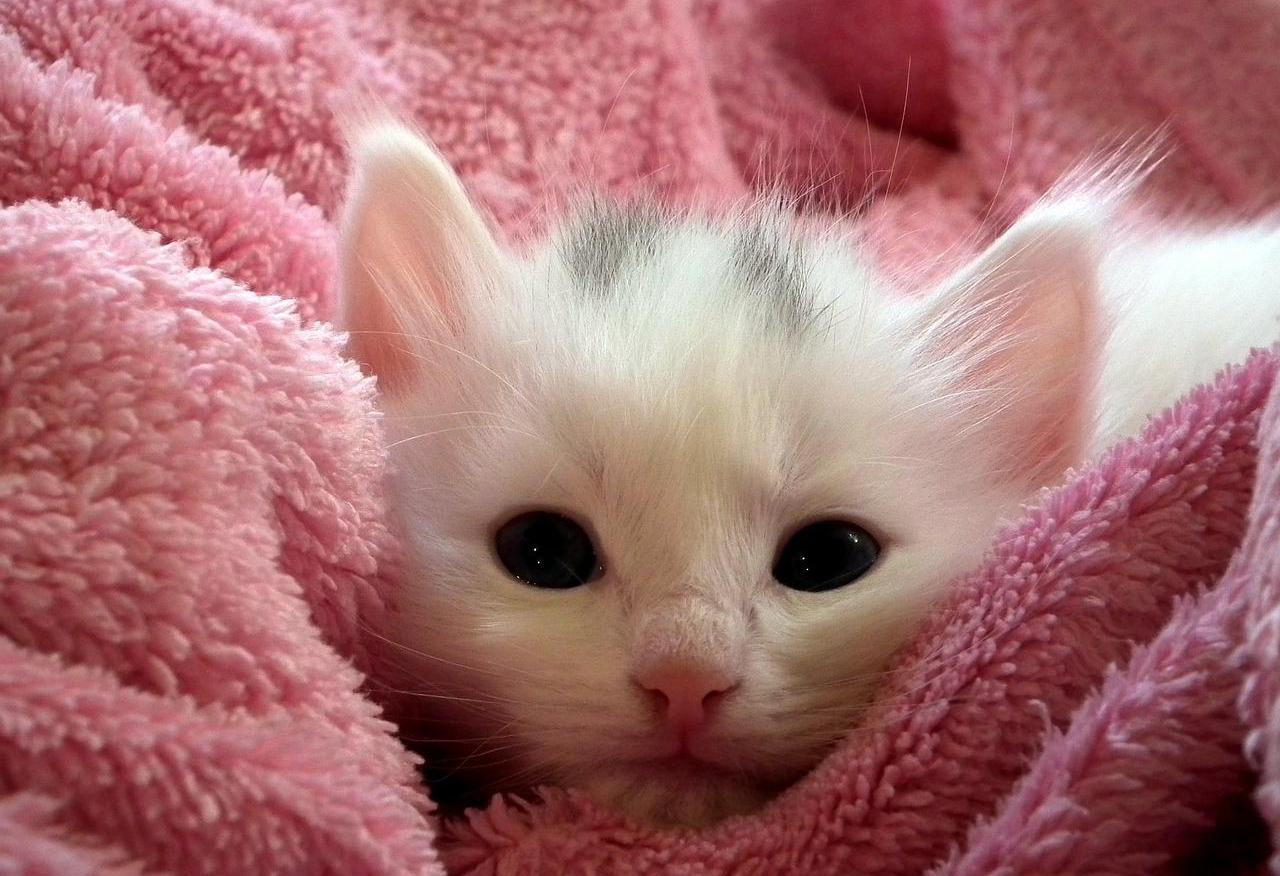My Kitten is Not Growing



See files for Cats
The first months of a kittens life are characterized by rapid growth. For this kitten this is a time of discovery and awakenings. For their human guardian it is a time for both joy at this new life and concern that they get the best start they can. In cases where we think the kitten is not growing as fast as they should, this concern can become acute. A kitten's vulnerability makes them particularly susceptible to parasites and disease. Improper feeding can also interfere with their development. However, there are various reasons to explain why a kitten is not growing.
This AnimalWised article addresses these reasons in our article on why my kitten is not growing. We explain why a cat may not seem to be developing and what we should do about it.
When do kittens stop growing?
While we need to be sensitive to any reason for stunted growth in cats, we can only do this is if we are aware of what constitutes normal growth. This means looking into the context of the adoption into your family. Knowing as much as you can about how to prepare for the cat entering the home is vital. This means about knowing breed specific information as well as their basic care needs.
Some of the reasons a kitten may not appear to grow include:
- Their breed
- Whether they are a runt
- Lack of nutrients
- Parasites
- Disease
- Dwarfism
It is possible to adopt a cat of indeterminate breed. We may bring home a stray or adopt from a shelter, something which can mean we don't necessarily know the breed. They may also be of mixed breed heritage. Some breeds are larger than others, while some are smaller. For example, if you have previously adopted a Maine Coon, but then have a Persian kitten, you may think the latter is not developing properly. Instead, the breed is known to be smaller.
Perhaps the smallest breed is the Munchkin cat. This is a breed whereby a genetic trait of shortened legs has been encouraged. The result is a short-legged breed, with a long body. If you have a Munchkin kitten they may appear to stop growing, but their development is relatively normal. Even when grown, they look like adult cats which look like kittens.
Not all kittens in a litter will be homogeneous. They will likely vary in size and appearance. In certain litters, there will be a kitten which is particularly small and weak. They are known as the runt. Runts are at a severe disadvantage as they are not as well-developed and they may not be able to fight for resources with their littermates. The mother may even reject them, although they will only usually be eaten if they are too weak to survive.
A runt may be poorly developed at the beginning and grow more slowly than their littermates. This doesn't mean they can't grow up to be a happy and healthy adult cat. It may require us to take over the duties of feeding and rearing them if the mother rejects them or they are unable to sufficiently feed.
For all of the above reasons, it is important to know when a kitten will stop growing. While different breeds will vary, so too will the individual. However, if a cat is healthy, has been fed properly and doesn't have any specific condition, they should naturally stop growing between 9 and 12 months.
Why is my kitten not growing?
Once you have been able to determine whether the cat is actually growing at a reduced rate, we need to look at the avoidable causes. So far we have referred to kittens which remain with their mother. However, we may have a adopted a kitten which looks undersized and is on their own. One of the reasons for this is being taken away from their mother prematurely.
Kittens should remain with their mother for a minimum of 8 weeks, ideally 12. This time allows for the cat to receive proper nutrients from their mother's milk as well as socialize correctly and, eventually, be weaned onto solid food. If this does not happen, they may suffer developmental deficiencies. However, if they are well-fed, their physical issues shouldn't be significant.
The reasons a kitten isn't growing is likely more related to a health problem. Since they are at one of the most vulnerable stages of their lives, they are at a greater risk of disease and parasitical infestation. When a mother cat gives birth, they will need to find somewhere which is safe, quiet and clean. If their nesting area is infected with parasites, an infestation is likely.
Some parasitical infestations are also asymptomatic. This means the parasite may be present, but there are no observable signs. When this occurs in a pregnant mother, the parasites can transfer to the kittens when breastfeeding. The vulnerable kittens don't yet have the immunity to fend off their effects like their mother. The result is that they stop growing.
Hygiene is also a factor in viral and bacterial infections. If there are bacteria or germs around the nesting area or in the kitten's environment, they are more prone to infection. This is why it is vital we observe the kittens well. If we see signs of malnourishment, vomiting or diarrhea, they are signs something is wrong in their development. If they go on ignored, the result can be stunted growth.
Since nutrition is so vital at this stage of the kitten's life, a poor or insufficient diet can stunt growth. The mother's milk should be sufficient, but if we are feeding them ourselves or we have provide inadequate food after weaning, it can lead to problems. If we try to feed the kittens homemade food, it is vital the nutrition is correct. As cats are obligate carnivores, trying to feed them a vegetarian or vegan diet can also cause serious development disorders.

Genetic and pathological reasons a kitten isn't growing
While poor nutrition or the presence of parasites may explain why a kitten isn't growing, there are some rare reasons for their small stature. It is possible for a kitten to be born looking healthy. Since they are yet to develop yet, it can be difficult to determine whether they are underdeveloped. As the weeks pass, we can get a better idea of whether their growth is actually stunted.
It is also easier to determine a kitten's growth rate if they remain with their littermates. By comparing a kitten to their siblings, we can tell if there is a problem with their growth. If so, it is possible they have one of the following conditions:
- Congenital hypothyroidism: the thyroid is a gland which helps to control the speed of the cat's metabolism via the secretion of hormones. When the thyroid is underacting, it is called hypothyroidism. In kittens, this is a genetic issue passed on by their parents. If the hypothyroidism is acute enough, it is possible their hormonal imbalance will lead to disproportionate dwarfism. They may exhibit shorter legs, a wider face and alterations to the central nervous system. Cerebral issues can lead to delayed teething, apathy, lack of appetite, lackluster coat or even a low body temperature.
- Mucopolysaccharidosis: this is the term for a range of diseases which are caused by enzyme deficiencies. Affected kittens are smaller than normal, have a disproportionate head size, widely separated eyes, shorter tails, clumsy gait and general developmental problems. This means bone may not grow sufficiently, neurological problems can occur, the cat's retinas may atrophy, heart problems are likely and there may be other issues such as paralysis.
- Pituitary dwarfism: this is a condition caused by a deficit in growth hormone. It causes constipation, delayed teething, vomiting or dehydration, in addition to a smaller size which makes it look like kittens have stopped growing. However, their smaller size should still be proportionate.
- Portosystemic shunt: in this case there is a circulatory problem that prevents toxins in the body from being properly processed. Instead, they pass directly into the bloodstream and result in various symptoms. This may include a including growth problems and mental disorders.
What to do if your cat stops growing
After reviewing the various reasons why your kitten may stop growing, it is important we address the situation. If the problem is due to an infection or infestation, inaction can be fatal. If we haven't taken the kitten to the veterinarian already, we need to do so regardless. They will help us to enact both a vaccination and deworming schedule to best ensure health problems don't occur in the future.
When the problem is genetic and related to a certain growth disorder, the veterinarian will be able to run diagnostic tests. They will be able to let us know the nature of the kitten's condition and how we need to amend their care needs accordingly. A veterinarian will also be best able to manage an infestation and provide treatment options for infectious disease.
A veterinarian will also be able to asses the kitten to determine if there is some other issue involved. They can determine whether they will need to be put onto a different type of diet and provide practical advice on their care. They will also help us to determine if the problem is breed related.
Some of the growth disorders and genetic issues cannot be cured or treated specifically. The cat's care as they age will be focused on managing the symptoms of these problems. Hormonal imbalances may be treated by providing hormone therapy. A portosystemic shunt may be operated on to help symptoms. Growth issues can affect the cat's life expectancy, so discuss this aspect with your veterinarian.

This article is purely informative. AnimalWised does not have the authority to prescribe any veterinary treatment or create a diagnosis. We invite you to take your pet to the veterinarian if they are suffering from any condition or pain.
If you want to read similar articles to My Kitten is Not Growing, we recommend you visit our Other health problems category.
- Quante, S., Fracassi, F., Gorgas, D., Kircher, P. R., Boretti, F. S., Ohlerth, S., & Reusch, C. E. (2010). Congenital hypothyroidism in a kitten resulting in decreased IGF-I concentration and abnormal liver function tests. Journal of feline medicine and surgery, 12(6), 487–490.
https://doi.org/10.1016/j.jfms.2010.01.013 - Veterinary Portal (2001). Mucopolysaccharidosis in Sats. Retrieved on January 30th, 2020, from
https://www.portalveterinaria.com/animales-de-compania/articulos/16846/mucopolisacaridosis-en-gatos.html - Silvestrini, P., Piviani, M., & Ruiz de Gopegui, R. (2008). Congenital Pituitary Dwarfism in a Siamese Cat. Clin. Vet. Small Anim., 28(3), 169-172.
https://ddd.uab.cat/pub/clivetpeqani/11307064v28n3/11307064v28n3p169.pdf






 My kitten is gaining weight but not growing in size his legs are so so short and he has a bend on his leg and he walks funny what's wrong with him
My kitten is gaining weight but not growing in size his legs are so so short and he has a bend on his leg and he walks funny what's wrong with him


